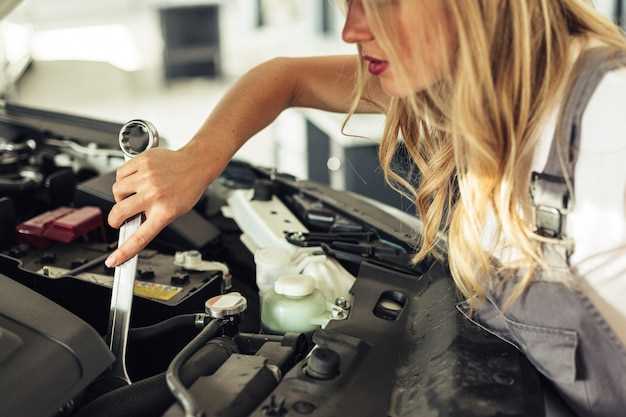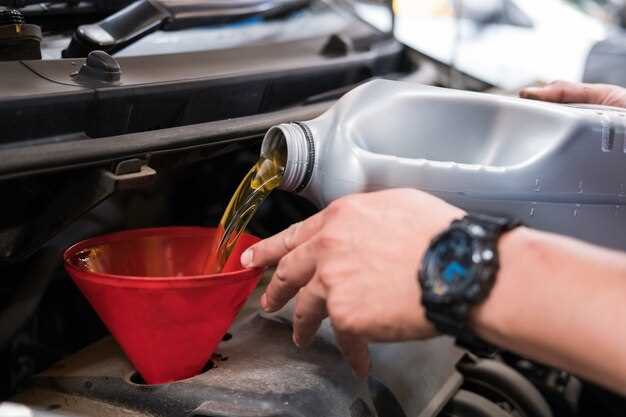
Regular oil changes are a fundamental aspect of vehicle maintenance that cannot be overlooked. Engine oil serves as the lifeblood of your vehicle, ensuring that all components operate smoothly and efficiently. When oil is fresh, it maintains optimal viscosity, allowing it to properly lubricate moving parts and reduce friction. However, as time goes on, oil becomes contaminated with debris and loses its ability to protect the engine.
Skipping routine oil changes leads to a cascade of wear on engine components. Old oil can’t effectively lubricate the engine, causing significant wear on vital parts such as bearings, piston rings, and camshafts. This increased friction not only reduces the engine’s performance but also accelerates the degradation of these components, potentially leading to catastrophic failures.
Ultimately, neglecting oil changes can result in severe consequences, including decreased fuel efficiency, poor engine performance, and a much higher risk of engine overheating. In the long run, the cost of skipping oil changes far outweighs the investment in regular maintenance, making it essential for vehicle owners to prioritize oil changes to ensure the longevity and reliability of their engines.
Impact on Engine Performance Over Time

Regular oil changes are crucial for maintaining optimal engine performance. Over time, oil degrades, losing its viscosity and effectiveness in lubricating engine components. When oil is not changed as recommended, it becomes contaminated with dirt, soot, and metal particles, which can lead to increased wear on engine parts.
One of the primary consequences of skipping oil changes is accelerated engine wear. As oil ages, it fails to provide adequate lubrication, causing friction between moving parts. This friction results in overheating, leading to potential damage and, ultimately, engine failure. Over time, this excessive wear can manifest as reduced horsepower and torque, compromising the vehicle’s overall performance.
Moreover, degraded oil can impair the engine’s ability to remove heat, causing critical components to operate at higher temperatures. This not only affects performance but can also result in premature failure of parts such as bearings and pistons. In the long run, neglecting oil changes can lead to costly repairs and diminished engine life.
In addition to mechanical wear, the buildup of sludge from old oil can obstruct oil passages, limiting oil flow to essential engine components. The reduced oil flow further exacerbates wear and can cause catastrophic engine damage if left unaddressed. To ensure maximum engine performance and longevity, adhering to a regular oil change schedule is essential.
Signs of Low Oil Quality in Your Vehicle

Maintaining optimal oil quality is crucial for the health of your vehicle’s engine. One of the most noticeable signs of degraded oil is a change in its color and consistency. Fresh oil is typically amber and smooth, while old or contaminated oil may appear darker, gritty, or cloudy. This alteration indicates that the oil has lost its ability to effectively lubricate engine components, leading to increased wear.
Another critical indicator is the presence of unusual engine noises. If you hear knocking, ticking, or grinding sounds, it may signal that the oil is not providing sufficient lubrication. When oil quality declines, it fails to create a protective barrier between moving parts, resulting in elevated friction and potential engine damage.
Additionally, an increase in oil consumption can suggest low oil quality. If you find yourself frequently refilling the oil reservoir, it may be a sign that the oil is breaking down faster than normal, necessitating more frequent changes to prevent wear on engine parts.
Furthermore, if the oil appears to be burnt, with a foul smell or dark brown color, it indicates oxidation and thermal breakdown. This situation can significantly impair engine performance, leading to further complications.
Finally, the presence of sludge in the oil can be a serious warning sign. Sludge is a thick, gooey substance formed from the combination of dirty oil and combustion byproducts. If sludge buildup is present, it may clog oil passages and hinder proper lubrication, causing severe wear on the engine.
Long-Term Financial Costs of Neglecting Oil Changes
Neglecting routine oil changes can lead to significant long-term financial burdens for vehicle owners. The engine relies on oil to lubricate its moving parts and ensure smooth operation. When oil levels are low or the oil becomes contaminated, wear on the engine increases, resulting in severe damage.
Key financial repercussions of skipping oil changes include:
- Engine Damage: Inadequate lubrication can lead to overheating and increased friction, causing critical components to fail. Repairs for a damaged engine can range from thousands to tens of thousands of dollars.
- Decreased Fuel Efficiency: An engine that isn’t properly lubricated works harder, consuming more fuel. This increased fuel consumption can inflate your monthly expenses significantly.
- Higher Repair Costs: Regular oil changes help identify potential issues early. Neglecting this maintenance can result in unexpected breakdowns and costly repairs that could have been avoided.
- Lower Resale Value: A vehicle with a history of poor maintenance will often fetch a lower price in the resale market. Buyers are wary of purchasing vehicles with potential hidden engine problems.
- Increased Wear and Tear: The longer oil is left unchanged, the more contaminants build up, accelerating wear on the engine components. This not only impacts immediate performance but also leads to long-term degradation.
In summary, neglecting routine oil changes results in far-reaching consequences that can severely impact your wallet. Maintaining a regular oil change schedule is crucial for preserving the engine’s longevity, efficiency, and overall vehicle value.
How Oil Change Frequency Affects Engine Lifespan
Regular oil changes are critical for maintaining a vehicle’s engine health and longevity. The oil in an engine serves multiple purposes, including lubricating moving parts, reducing friction, and dissipating heat. Over time, engine oil degrades due to exposure to high temperatures, contaminants, and combustion byproducts, leading to reduced effectiveness.
When the oil is not changed frequently enough, it loses its viscosity and ability to protect engine components. This leads to increased wear on critical parts such as bearings and camshafts. As wear accumulates, the risk of engine failure significantly rises. Inadequate lubrication caused by old, contaminated oil can also result in overheating, which further compromises engine integrity.
Moreover, the specific interval for oil changes can vary based on factors like engine type, driving conditions, and oil quality. Following the manufacturer’s recommendations is essential to ensure the engine receives optimal protection. Vehicles driven in extreme conditions–including frequent short trips, towing, or harsh climates–may require more frequent oil changes to mitigate wear and extend engine lifespan.
In summary, the frequency of oil changes directly influences how well the engine performs and how long it lasts. Neglecting this routine maintenance can lead to premature wear, escalating repair costs, and ultimately a shorter vehicle lifespan.
Environmental Consequences of Poor Oil Maintenance
Neglecting routine oil changes can lead to significant environmental issues. When the oil in an engine is not changed regularly, it becomes contaminated with dirt, debris, and harmful substances. This degradation of oil results in increased wear on engine components, leading to leaks and malfunctions. Such leaks can cause toxic oil to seep into the soil and waterways, posing a serious threat to local ecosystems.
Moreover, an engine operating on degraded oil emits higher levels of pollutants into the atmosphere. The inefficient combustion of fuel in a poorly maintained engine releases particulate matter and other harmful emissions, contributing to air pollution and exacerbating climate change. The accumulation of these pollutants can have detrimental effects on human health, wildlife, and the overall quality of our environment.
Furthermore, the disposal of improperly maintained oil can lead to environmental hazards. Used oil, if not recycled or disposed of correctly, contaminates water sources and harms aquatic life. It is crucial for vehicle owners to recognize that routine oil changes not only prolong engine life but also play a significant role in protecting the environment. Regular maintenance helps to minimize wear, reduce emissions, and prevent harmful spills, ultimately fostering a healthier planet for future generations.
DIY Oil Change Tips to Avoid Common Mistakes
Performing a DIY oil change can save you time and money, but it’s essential to avoid common mistakes to ensure your engine’s longevity. Here are some practical tips for a successful oil change.
First, always gather the necessary tools and supplies before starting the process. This includes the right type of oil for your engine, a new oil filter, an oil catch pan, and essential tools like a wrench and an oil filter wrench. Having everything ready will prevent interruptions and mistakes.
Next, make sure your vehicle is on a level surface. Parking on a slope can cause oil to drain improperly, potentially leaving old oil in the engine. Always allow the engine to cool down before starting the oil change to avoid burns and ensure safer handling.
| Common Mistake | Correct Approach |
|---|---|
| Not consulting the manual | Refer to your vehicle’s manual for specifications on oil type and capacity. |
| Using the wrong oil filter | Always use the manufacturer-recommended oil filter to prevent leaks. |
| Neglecting to clean the drain plug | Ensure the drain plug is clean to avoid contamination of new oil. |
| Overfilling or underfilling oil | Check the oil level with the dipstick after adding oil to ensure it’s within the recommended range. |
| Improper disposal of old oil | Always dispose of old oil and filters at a recycling center or auto shop. Do not pour it down drains. |
After completing the oil change, run the engine for a couple of minutes and check for leaks around the oil filter and drain plug. This ensures that the new oil is circulating properly and that everything is sealed correctly.
By following these tips, you can avoid common pitfalls during your DIY oil change and help keep your engine healthy for miles to come.
